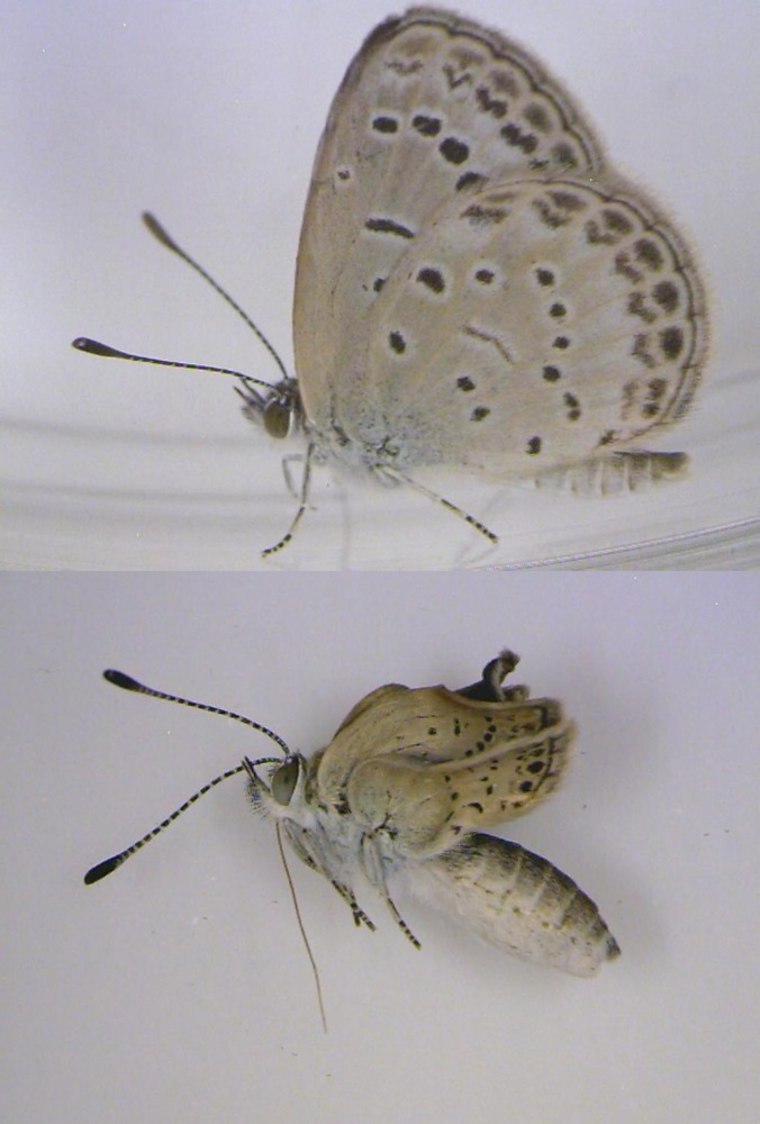TOKYO -- Researchers in Japan have found signs of mutation in butterflies, signaling one of the first indications of change to the local ecosystem as a result of last year's nuclear accident in Fukushima, according to one of the first studies on the genetic effects of the incident.
Joji Otaki from the University of the Ryukyus in Okinawa, who led the research, collected 144 commonly-found pale grass blue butterflies two months after the March 2011 accident at the Fukushima Dai-ichi nuclear plant.
Initial results indicated that roughly 12 percent of the butterflies showed signs of abnormalities, such as disfigurement in their antennas, smaller-sized wings, change in color patterns and indented eyes, Otaki said.
Even more alarming, when he collected another 238 samples six months later he found that those abnormalities had increased to 28 percent and the mutations had doubled to 52 percent in their offspring.
To see the effects of internal exposure to radiation, unaffected clean butterflies were also fed cesium-coated leaves collected from Fukushima. The result was a reduction in the size of those butterflies, as well as a lower survival rate.
In Japan, a nuclear ghost town stirs to life
The Fukushima disaster occurred after a 9.0-magnitude earthquake knocked out a power line at the plant and generated a tsunami that flooded the facility's emergency generators, destroying the plant's cooling system. Catastrophic meltdowns occurred in three reactors, releasing radiation that has tainted the surrounding environment.
Five nuclear plants in total suffered some level of damage from the earthquake and tsunami; all but Fukushima Dai-ichi were shut down safely.
Story: What are the odds? US nuke plants ranked by quake risk
'Something has gone wrong'
Otaki, who has been studying these butterflies for 10 years to analyze the effects of global warming, said that butterflies are the best environmental indicators because they are widely found in almost any environment.
"But since we've seen these effects on butterflies, it’s easy to imagine that it would also have affected other species as well. It’s pretty clear that something has gone wrong with the ecosystem,” he said.
However, at the same time, he also warns that because each species’ sensitivity to radiation varies, it was too early to immediately apply these finding to humans.
NYT: For new nuclear chief, concerns over plant safety
But what is clear, said Otaki, is that the genetic changes found in these butterflies indicate a disruption in Fukushima's ecosystem and that more study is needed to learn the full scope of the effects of the radiation released into the environment.
At Hiroshima memorial, Japan leaders vow to listen to citizens in revamp of nuke policy
"Effects of low level radiation is genetically transferred through generation, which suggests genetic damage. I think it’s clear that we see the effects passed on through generations," Otaki added.
The Associated Press contributed to this report.
More world stories from NBC News:
